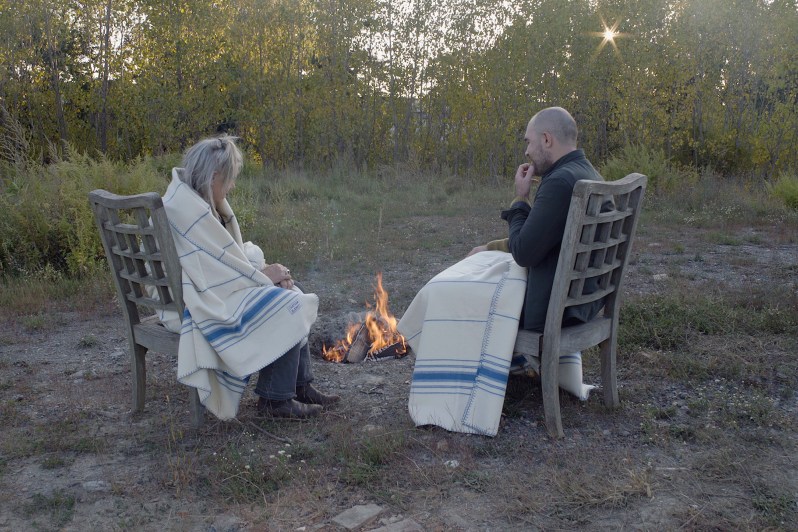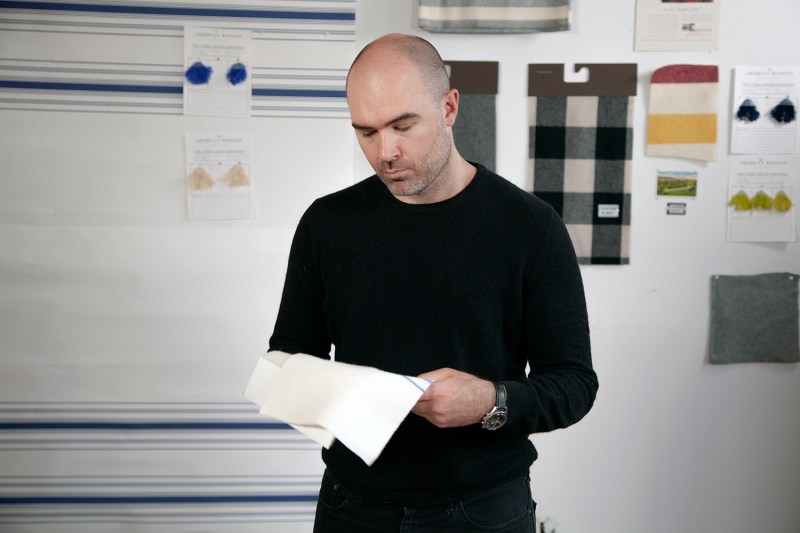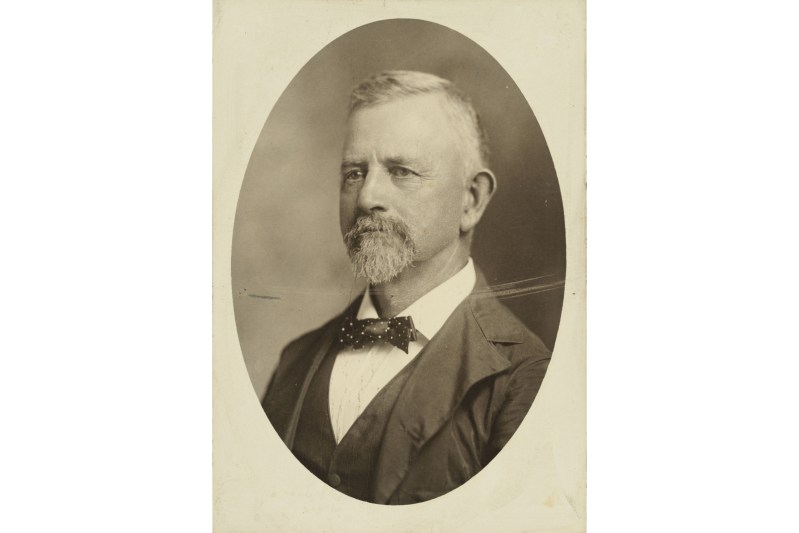
Spend too much time listening to the news these days, and you’ll be convinced it’s the end of the world: you need a good throw blanket. Current events notwithstanding, on a chilly winter’s night it’s great to snuggle up in one with your favorite warm beverage — or body — of choice. The Chatham Blanket may be just the thing for days and nights like these, coming complete with a deep history of Made-in-U.S.A. quality combined with 21st-century resourcefulness.
Alex Chatham is an industrial designer — whose projects include Peloton — based in New York City. He is the namesake — and great-great-grandson — of Alexander Chatham, an entrepreneur who installed a wool card (the machine that is the first step in turning wool into yarn after it’s been shorn) in his North Carolina mill in 1877. For five generations the Chatham family produced wool blankets that were sold across the United States and were even used by the Army and Navy in World Wars I and II. Like so much American manufacturing in the late 20th century, though, the company suffered from foreign competition and closed its doors in 1990.
Chatham is picking up where his cousins left off 30 years ago, seeking to reinvigorate his birthright by creating a luxurious wool blanket that will live up to the standards of the modern customer.
He started the process by digging into the family archives. He had a few vintage blankets of his own but searched through libraries, museums, and even eBay to find the originals. Turns out a historian in Elkin, North Carolina — where the Chatham Blankets manufacturing facility was once located — had an 1894 company catalog, complete with blanket swatches and vintage photographs. With these materials in hand, Chatham had just the inspiration he needed to recreate both the design and structure of his family’s heritage.

The next step was to find a manufacturer. The family mill was abandoned long ago, and there are currently only four mills in the United States capable of producing a blanket to Chatham’s specs. He settled on one in northeastern Connecticut that’s been in operation since before the Civil War.
Chatham started a Kickstarter campaign to raise funds for his project on October 19. “I’m paying a lot more to have these made in the United States,” says Chatham, “and I think that’s essential for this project.”
“I realized that nobody was interested in hearing about wool blankets in July, so I waited for cooler weather to start the drive,” he explains. “The Kickstarter will be done before Black Friday, and the blankets will be delivered in February.” (Chatham cites the story of the Coolest Cooler, a 2013 Kickstarter project that failed miserably when it launched during cold weather, but which broke a platform record during a second attempt in July of 2014.)

As of this writing, the Chatham Blanket had exceeded its $73,650 goal by more than $5,000 with 280 backers. Pledges of $249 or more will be rewarded with a blanket from the first production run; $449 for two.
“My goal is to establish a market and see what people are willing to pay for good design and branding,” says Chatham. “I think a lot of people say they want things that are made in the United States, but then when you show them the price, they balk and say it’s too expensive.”
“I do think that there is a market for American-made luxury goods,” he adds. “Many American brands have gotten caught in a marketing thing where boots or jeans — sort of workwear — are an everyman product but not at an everyman price. I think that we’ll see a shift to a little more refinement (in goods made here) in the next 10 years or so.”

Chatham is certainly doing his share to raise that level of sophistication. The design of the current rendition is based on an original from his research. The 100% wool blanket is mostly undyed, with a fine wooly texture that is soft and insulating. The natural creamy-white ground is set off with bright indigo stripes and matching whipstitched edges for added durability. Each is branded with a sewn-on label. At 60 by 76 inches, it’s a “throw size,” perfect for a picnic or for wrapping around oneself at a campfire. Of course, that’s not to say it won’t look perfectly chic draped over the end of your bed, although you may have to fight for custody on cooler nights.
Alex Chatham is bringing a renewed sense of pride, not only in his family name, but to a new generation of U.S.-based manufacturing with the Chatham Blanket. In these days where snuggling under a blanket may seem like a perfectly justified reaction, why not have the finest, most comfortable option available? Invest in a piece of history now and pass it down for generations to come.
Editors' Recommendations
- This is the amazing watch brand you’ve been seeing pro golfer Chris Kirk wearing
- These are the best new Rolex watches from Watches And Wonders 2024
- You need this new limited edition Rimowa luggage collection in your closet
- A super-rare Rolex watch is up for sale — this is what you need to know
- You’ll soon be able to buy new Tag Heuer sunglasses and eyeglasses again


